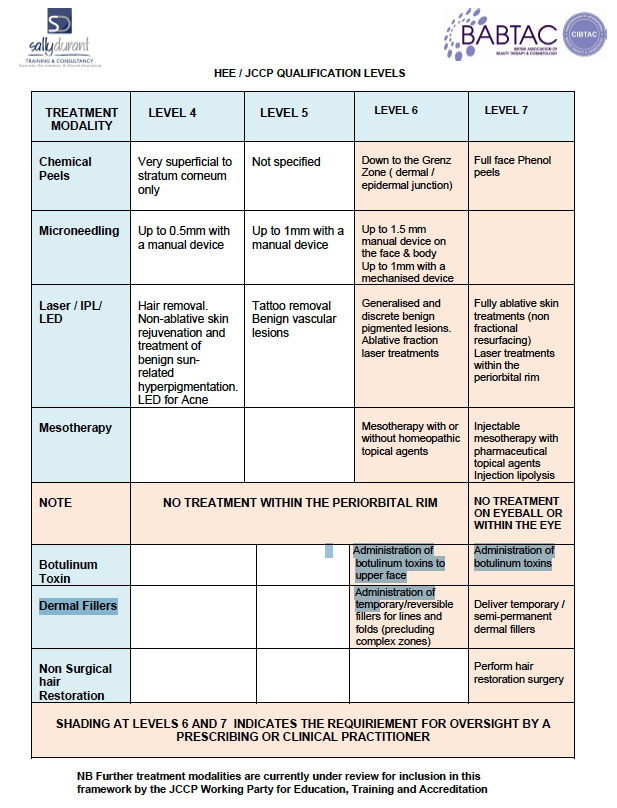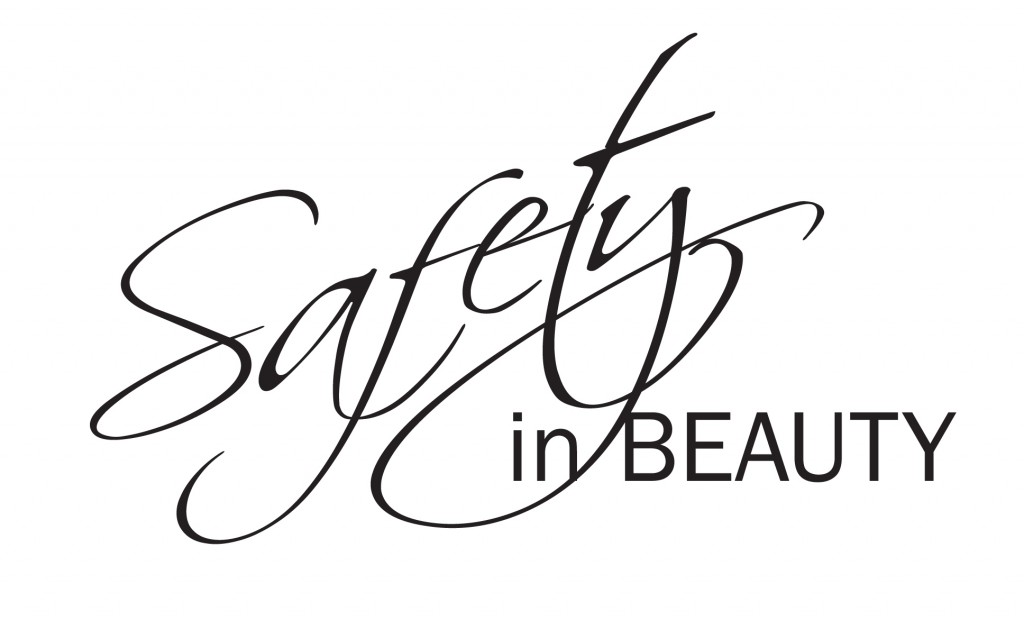
An essential guide for all aesthetic beauty therapists in readiness for the launch of the JCCP Register of Aesthetic Practitioners – By Sally Durant
It all began with the long awaited publication of the HEE Report on January 8th setting out a new qualification framework for all professions providing clinical skin treatment non-surgical cosmetic procedures. Since then there has been much activity behind the scenes and many people are either anxious about what they should do now to secure their place in the sector or confused by mixed messages and the ‘Rumour Mill’.
I will therefore hope to separate facts from fiction and clarify areas of speculation in relation to industry regulation. In providing you a with concise and accurate update, I hope to help you make sense of where our industry is heading and how this will affect you and your business moving forward.
1. The Formation of The Joint Council of Cosmetic Practitioners (JCCP)
In April this year, following the publication of the HEE report in January, various organisations united to establish a new autonomous industry body to consolidate, and implement, the HEE recommendations for qualification standards within the aesthetic sector.
This body is the Joint Council of Cosmetic Practitioners (JCCP) and is representative of all professional disciplines including plastic surgeons, dermatologists, aesthetic doctors and nurses, dentists and beauty therapists. As such it marks a milestone in recognising and securing the role of beauty therapists and non-medical aesthetic practitioners within the medispa sector as well as in establishing a uniformity of qualification and practice across all disciplines providing aesthetic treatment.
2. The Formation of the Clinical Standards Authority (CSA)
The CSA has been established to standardise protocols for best clinical practice across the aesthetics industry.
It will work in conjunction with the JCCP in order that the clinical and practice standards are integrated fully into the qualification standards.
3. The Establishment of a Professional Register
One of the government’s stipulations in commissioning the JCCP was that it must establish a voluntary register of practitioners which all professionals working within aesthetics should join, irrespective of other professional memberships. The resultant JCCP register is due to be ready for accreditation by the Professional Standards Authority in June 2017 and officially launched in November 2017.
Practitioners and training organisations will then most likely have 5 years to comply (this term is subject to final JCCP agreement).
4. Legislation
While at present this is not a legal or statutory requirement, it is intended that membership of this voluntary register will be implemented in the strongest sense by way of industry selfregulation.
Membership of the register will not only represent a ‘kite mark’ for the public to source appropriately qualified practitioners and compliant clinical facilities but will also register courses and training providers for the guidance of practitioners looking for accredited education and training.
Supplier driven training, and that without the accreditation of an Ofqual awarding body, university or other accrediting organisation endorsed by the JCCP, will not be acceptable for entry onto the register.
5. Practitioner Registration
The Register for practitioners will be for: 1. Practitioners already registered with their professional statutory bodies ( Eg: GMC, NMC, GDC etc) and: 2. Practitioners not registered with a statutory body – this includes ALL beauty therapists as no national statutory body exists. These practitioners must be able to demonstrate that they meet Level 4 and above educational and practice standards as described in the HEE Education and Training Framework as described below. To gain entry onto the register as an individual practitioner you will need a minimum qualification at Level 4 in each treatment genre you wish to provide and you will only be registered for the level of practice stipulated within the qualification framework . For example, to provide superficial chemical skin peels to the Stratum Corneum, a Level 4 qualification in chemical skin peeling will be required, while to peel down to the Dermal-Epidermal Junction will require a Level 6 qualification.
6. The Qualification Framework
Which treatment at which level ? A full summary of the HEE qualification Levels is attached to this document. However these are given in summary below: • LIPLED – Laser, IPL and LED • CPSR – Chemical Peeling and other modalities of Skin Rejuvenation treatment including micro-needling and mesotherapy • BT – Botulinum Toxin • DF – Dermal Fillers • HRS – Hair Restoration Surgery – GMC only HEE also identified a number of treatments which were considered outside of its immediate scope but which are scheduled for review to be included within the qualification framework.
These are referred to in the report as ‘Orphan Treatments’.
Other additional treatment modalities are also proposed for review. Additional treatments at levels 4 – 6 include: • Blemish Removal / Advanced Electrolysis • Cryotherapy • Tattooing / Micro-pigmentation • Micro-blading • Radio Frequency • Ear and Body Piercing • Carboxytherapy • Ultrasound • Cryolipolysis • Platelet Rich Plasma
7. Access to Level 6 and 7 Qualifications for Non-Medical Practitioners
A progression route for all practitioners, medical and non-medical (including beauty therapists) is to be developed to enable non-prescribing clinicians, and those without a medical background, to qualify at Levels 6 and 7. This access route will be strictly subject to them having previously achieved JCCP approved sector qualifications at Levels 4 and 5 and their practice of treatment modalities falling within the qualification framework at Levels 6 and 7 will be subject to the oversight of a clinical professional.
8. Clinical Oversight
Exactly how Clinical Oversight will be put into practice for non-prescribing clinicians and nonmedical practitioners is a matter under discussion by the JCCP Working parties and further information will be available as soon as agreement has been made.
9. Register of Training Providers
There will be a separate register for all education and training providers wishing to offer the JCCP approved sector qualifications at Levels 4 – 7. Each educator or trainer will need to be appropriately qualified, both clinically and within a formal education capacity. They will also need to be compliant with the requirements for assessor qualification and / or clinical oversight of non-medical practitioners where applicable (Level 6 & 7). Training premises will also be required to evidence their suitability for the delivery of education and training while equally being compliant with clinical best practice
10. What is happening now?
The JCCP Working Parties and Professional Steering Groups The JCCP has set the wheels in motion for the establishment of the new voluntary Register and implementation of the new qualification standards.
To achieve these goals two principle Working Parties have been formed, one to coordinate the establishment of the Register and the other to consolidate and further develop the Education and Training Standards (including endorsement of National Occupational Standards for all pertinent treatment modalities) and embed these into a qualification framework.
Each profession working within the aesthetics industry has appointed its own Steering Group to discuss how these developments should be taken forward appropriately for their specific discipline.
This will ensure that all aesthetic practitioners, medical and non-medical, will have a representative voice in this process and that the outcomes of this developmental phase will have been universally agreed across all disciplines.
The JCCP recognised Steering Group for the beauty therapy sector is being headed by HABIA (The Hair and Beauty Industry Authority – the UK Sector Skills Council) with the membership of this group having been drawn from independent and corporate beauty therapy professionals, education and training providers and awarding bodies.
11. What is already in place?
Each group tasked with curriculum development will be using a combination of existing HEE Education and Training Framework, National Occupational Standards (NOS) and clinical/practice competency frameworks that are already in place.
Where standards do not exist or where updates are required, this development work will be undertaken. The qualifications already accredited by Ofqual that cover the treatment modalities within the HEE Framework and mapped against NOS include : − Levels 4 and 5 – Laser and Light Treatment − Core of Knowledge for Laser and Light Treatment − Level 4 Core Knowledge for Aesthetic Practice ( HEE Generic Knowledge and Skills) − Level 4 Advanced Skin Science − Level 4 Skin Health Assessment for Aesthetic Practice − Level 4 Chemical Skin Peeling − Level 4 Micro-needling − Level 4 Micro-pigmentation − Level 4 Advanced Skin Studies and Clinical Aesthetics − Level 4 Blemish Removal using Thermolysis and Cryotherapy − Level 7 – Injectable Treatments of Botulinum Toxin and Dermal Filler − There are also a number of post-graduate degrees available in Aesthetic Practice but these currently are limited to medical professionals only
12. Timeline
It is anticipated that the Registers of Aesthetic Practitioners and JCCP- Approved Training Organisations will be in place by November 2017.
13. What are the implications of practitioner registration on professional indemnity insurance and product or equipment supply?
You may be asking yourself, in the absence of legislation and the voluntary nature of the Register, why will you need to comply with the new qualification standards? In answer to this, the leading insurance companies who offer cover to the aesthetics sector together with some of the major industry suppliers of product and equipment are ‘around the table’. They are actively working with the JCCP and CSA to establish the industry standards and the alignment of insurance cover and product or equipment supply in accordance with each level of practice. Indeed some insurance companies are already denying insurance, or increasing premiums, for those without at least a Level 4 qualification.
14. In Conclusion
The reality is that the aesthetics industry is working towards a structured self regulation process underpinned by formally accredited qualification framework that all practitioners, whatever their background, will be required to complete for each modality of treatment they wish to provide which will ensure greater accountability of those working within it and improved safety and public protection for the individuals who use our services.
This can only be viewed as being extremely positive, especially for those from a traditional beauty therapy background as it will formalise our role within the medipsa sector and secure our future.
It also provides a clear and accredited career path for those wishing to provide higher level non-surgical cosmetic procedures.
Naturally there will be many further questions you may have after reading this document and I will be happy to try to answer them for you. However, I hope that it has helped to clarify what is happening in the sector and what you as an individual practitioner, business owner or training provider will need to do in order to qualify for entry onto the JCCP’s Register of Aesthetic Practitioners. In the meantime, the JCCP and CSA will be developing its own web site and information portal in early 2017 and will post all relevant material and updates that can be put in the public domain.
The representatives of the aesthetic therapy sector who sit on the JCCP and the Aesthetic Practitioner Steering Group will ensure that this information is circulated back to those who we represent. For further information and to

With kind thanks to Safety in Beauty Expert Panel Advisor: Sally Durant
This report was compiled By Sally Durant on behalf of BABTAC and the CIBTAC/SALLY DURANT Partnership. The Safety in Beauty Campaign is not affiliated to any commercial entity quoted or published on this report.
The views and information expressed in this email are not representative of the views of The Safety in Beauty Campaign and this report has been compiled for the purposes of information only in the opinion of the Author. Publishing of this article does not warrant an endorsement of the subject matter or commercial entities mentioned within and published.
Any reproduction of information on this page should be requested in permission by Safety in Beauty.
